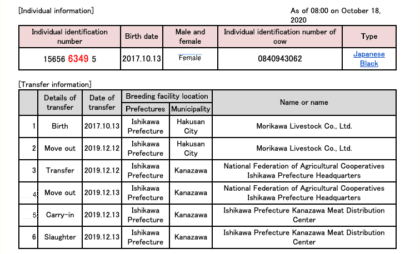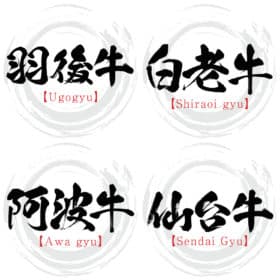Category: General
Wagyu – Why It Has To Be Japanese?
Have you ever wondered what the difference is between Japanese Wagyu and its western counterparts raised in the U.S. or Australia? Here are 4 reasons why Japanese Wagyu is the superior choice.
Koshu Wine Beef: The Wagyu Kissed by Bacchus
Ernest Hemingway once said: “My only regret in life is that I did not drink more wine.” His remorse is certainly not shared by the Koshu Wine Beef, as this brand of Wagyu is fed the grape marc from wine making from the tender age of 6 months.
Kobe Bryant v. Kobe Beef: Who Was the Original?
Did you know that Kobe Bryant actually sued the City of Kobe over the right to rename the highly coveted Kobe Beef, but he was actually named after Kobe Beef?
Crazy Wagyu Diet: Apples, Chinese Herbs, and … Charcoal!
This week, we will introduce you to three more surprising ingredients in Japanese Wagyu’s diet. If you are lucky enough to try one of these Wagyu, be sure to notice the difference in their flavor!
Your Wagyu Ate What?! Surprising Diet of Japanese Wagyu
Some Japanese Wagyu farmers have decided to add a dash of “spice” to their cattle’s diet. The result is some uniquely delicious meat. This article introduces some of the most unusual ingredient in Wagyu feed.
What’s Behind the Wagyu Traceability Number?
The traceability number of a Wagyu is like the birth certificate, passport, and CV all in one. It tells you everything you need to know about the meat in your plate. This article explains how to read it.
Wagyu Brands: What Do They Tell You?
The more sophisticated diners are looking beyond Kobe Beef to experience new and unique brands. Just like in wine and cars, brands can give you a lot of information about the products.
Formula of Tasty Wagyu: Brand x Feed x Environment x Vintage x Gender
If you are an experienced Wagyu consumer (whether as a chef or a diner), you already know that the official grades, such A5 and B4, have little to do with the actual taste of the meat. What, then, determines the taste of Wagyu?
3 Reasons Why You Should Never Serve or Eat an A5 Wagyu Steak
It makes us cringe every time we see A5 Wagyu sirloin served as a steak in an American or European restaurant. Unless you are interested in burning money and killing your customers at the same time, this combination should rarely be attempted for 3 reasons.
Ishigaki Gyu: The Wagyu Brand Fit for World Leaders
What do Bill Clinton and Vladimir Putin have in common when it comes to Wagyu? Ishigaki is the answer.





